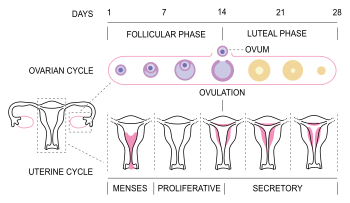Frozen Embryo Transfer (FET)
FET treatments are possible after IVF cycles in which excess embryos are frozen. The advantages of an FET cycle over an IVF cycle are that it is much less expensive and less invasive as an oocyte collection procedure is not needed and also less medications are required.
Australian fertility clinics have been freezing embryos since 1985, and the subsequent transfer of these has resulted in the birth of many healthy babies. There is no increase of abnormalities in children born from frozen embryos than those from ‘fresh’ embryos. Embryos can be frozen after 24, 48 or 72 hours in culture and also at blastocyst stage.
Management of the FET Treatment Cycle
The frozen embryo transfer cycle is relatively non-invasive compared to an oocyte retrieval cycle. The embryo/s can be replaced either in a natural cycle or in a controlled cycle depending on whether the fertility clinic can easily monitor the time of natural ovulation. The aim is to transfer the embryos into the uterus at the correct time in relation to ovulation and the thickness of the lining of the uterus (endometrium).
In a ‘natural’ FET cycle no medications are used before the embryo transfer. In a ‘controlled’ FET cycle, oestrogen (Progynova or other brand) tablets are administered in order to prepare the endometrium for implantation. In both natural and controlled FET cycles, the cycle is tracked for ovulation using blood tests to monitor the hormone levels. The development of the endometrium is monitored by ultrasound scanning (approximately 1–2 scans). The first ultrasound is usually performed on day 10-12 of the cycle (ie 10 to 12 days after the start of menstruation). If the endometrium is thick enough and of the right maturity, the embryo/s will be thawed for transfer. The embryo transfer will be performed 2–3 days after ovulation. Progesterone pessaries are often used to maintain the endometrium, and may need to be continued, often for the first trimester of a pregnancy. In FET cycles where oestrogen (Progynova) was administered then this medication may also be continued for the first 12 weeks of pregnancy. Patients need to contact their specialist to organise a cycle plan to be sent to the fertility clinic for their FET cycle. An appointment with the specialist or fertility clinic to discuss this plan and sign any consent forms may be required prior to commencing the FET cycle. Note that the fertility clinic cannot thaw any embryos without the written consent of the patient, and a new consent form is required for each cycle. Patients may also need to make a booking for an FET cycle, so should check with the fertility clinic in advance. It is also usually necessary to pay the appropriate prepayment before beginning the FET cycle.
Thawing the embryos
The embryologist will thaw the embryos so that the age of the embryo/s corresponds to the maturity of the woman’s uterine lining. The exact timing will depend upon the stage at which the embryos were frozen in the IVF cycle.
Patients may be asked to ring the day before their embryo transfer to check the time that the procedure is booked for. Unfortunately, not all embryos survive the freezing, storage and thawing process and the fertility clinic should contact patients if there is a problem with the thawing of the embryo/s.
See Treatment Options> How Many Embryos Should Be Transferred? for information regarding deciding on the number of embryos to transfer.
Embryo transfer procedure
The embryo transfer procedure and follow-up tests are the same as for IVF embryo transfer, described in the Treatment Options>IVF section.
The success rate of an FET Cycle
The success rate using frozen embryos is approximately 20%. The pregnancy rate will depend on the number and quality of embryos transferred, age and cause of infertility.
Frozen Embryo Continued Storage
If patients have not used all their embryos 12 months after the IVF cycle in which they were frozen, then it is likely that the fertility clinic will contact them to confirm their intentions. Generally, patients will then be contacted every 6 months for reconfirmation of their intentions, and an invoice may also be sent for continuing storage fees at this time.
If patients decide they no longer wish to have their frozen embryos kept for themselves then they have the choice of donating them or disposing them. A combination of these choices is also available.
Consent forms are signed before freezing the embryos in the IVF cycle relating to the ownership of the embryos in the event of death/divorce etc and any disputes are directed to the Commissioner of Health.

